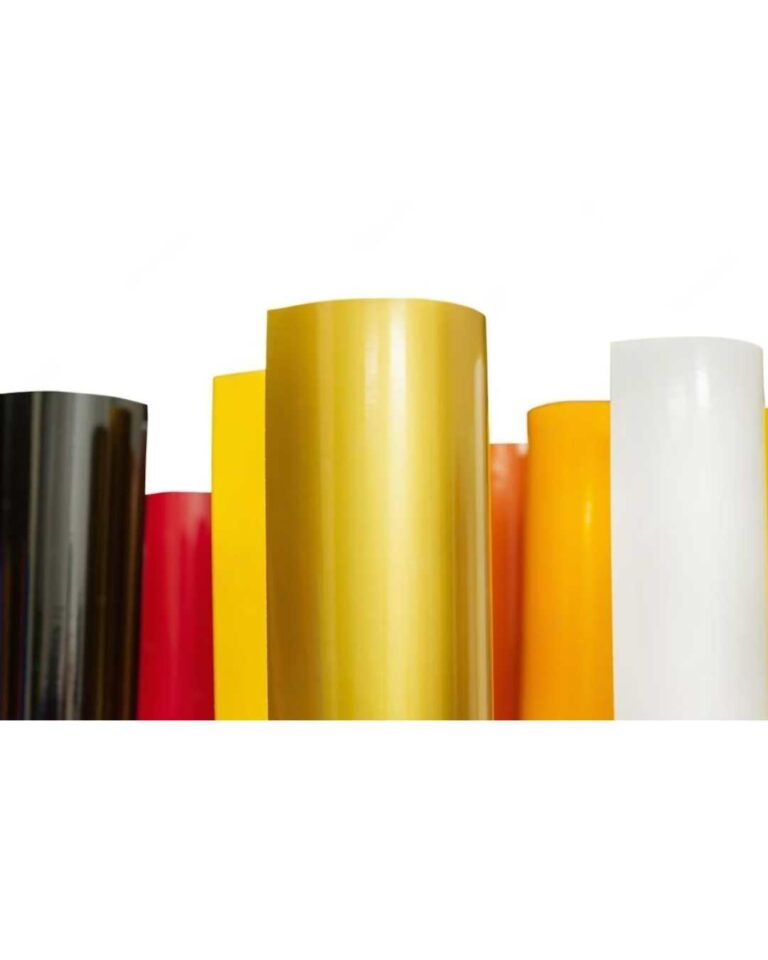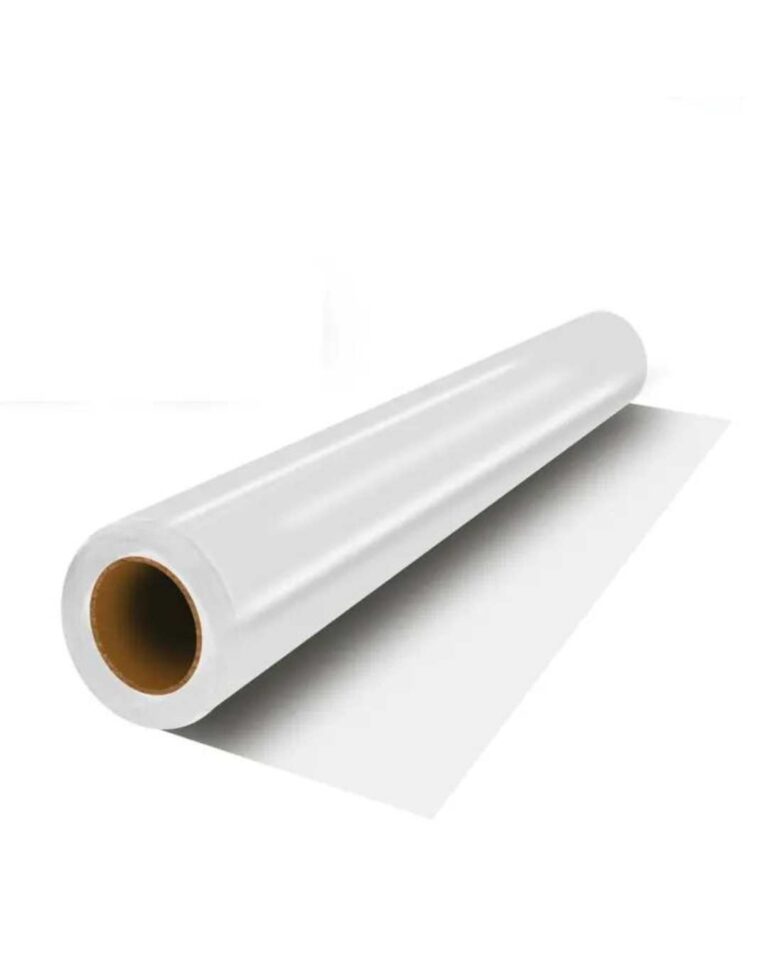Heat transfer vinyl (HTV) has revolutionized the world of custom apparel and creative projects. Among the various types of HTV available in the market, one popular choice is Venayl. Venayl offers a wide range of heat transfer vinyl options, each designed to cater to different needs and preferences. In this blog post, we will delve into four subcategories of Venayl: PU 1mm thick double color heat transfer vinyl, PU Heat Transfer Vinyl, PU Mesh Heat Transfer Vinyl, PU Pattern Heat Transfer Vinyl, and UV Sensitive Color Change Heat Transfer Vinyl. Let’s explore these HTV variants and learn how they can enhance your creations!
Introduction to Heat Transfer Vinyl
Heat transfer vinyl, also known as HTV, is a type of vinyl material that can be applied to fabric using heat and pressure. It comes in various colors, finishes, and patterns, allowing you to easily unleash your creativity and personalize your t-shirts. HTV is widely used by crafters, DIY enthusiasts, and professionals in the garment industry.
How Does Heat Transfer Vinyl Work?
Heat transfer vinyl consists of a carrier sheet on one side and the vinyl material on the other. The carrier sheet acts as a protective layer and holds the vinyl in place until it is ready to be transferred to the fabric. To use heat transfer vinyl, you’ll need a heat press machine or an iron.
How To Apply Heat Transfer Vinyl On Fabric:
- Design or select your desired image or text using design software or pre-made designs.
- Mirror the design horizontally using the software to ensure it appears correctly on the fabric.
- Load the heat transfer vinyl into the machine, ensuring the carrier sheet is facing down.
- Cut the design using a cutting machine or by hand, ensuring precision and accuracy.
- Weed the excess vinyl from the design carefully using a weeding tool.
- Preheat your heat press machine or iron to the recommended temperature for the vinyl.
- Place the t-shirt on the heat press machine or a flat surface and pre-press it to remove any wrinkles or moisture.
- Position the weeded design on the t-shirt, making sure it is centered and aligned correctly.
- Apply heat and pressure using the heat press machine or iron according to the vinyl manufacturer’s instructions.
- Once the vinyl has adhered to the fabric, peel off the carrier sheet carefully while the vinyl is still warm.
- Allow the t-shirt to cool completely before wearing or washing it.
Now that you have a basic understanding of heat transfer vinyl, let’s explore the best options available for your t-shirt projects.
Heat Transfer Vinyl Category:
PU 1mm Thick Double Color Heat Transfer Vinyl:
The PU 1mm thick double-color heat transfer vinyl is a versatile choice for vibrant and eye-catching designs. This type of HTV offers a unique feature of two colors on one vinyl sheet, allowing for intricate and creative designs. With its 1mm thickness, it provides excellent opacity and durability. Whether you’re adding a pop of color to garments or creating intricate layered designs, this vinyl is a fantastic option.
PU Heat Transfer Vinyl:
PU Heat Transfer Vinyl is a widely used and popular choice in the heat transfer vinyl industry. It is known for its soft and thin texture, making it ideal for application on a variety of fabrics, including cotton, polyester, and blends. PU HTV offers excellent flexibility, durability, and washability, ensuring that your designs withstand the test of time. With a wide range of colors available, you can let your creativity run wild and bring your designs to life with ease.
PU Mesh Heat Transfer Vinyl:
For projects that require breathability and a textured look, PU Mesh Heat Transfer Vinyl is the way to go. This variant features a mesh-like texture, which allows air to pass through, making it suitable for performance wear, sports jerseys, and other garments where comfort and ventilation are essential. The PU Mesh HTV offers excellent adhesion and elasticity, ensuring your designs remain intact even during high-intensity activities.
PU Pattern Heat Transfer Vinyl:
PU Pattern Heat Transfer Vinyl adds a touch of uniqueness and style to your designs. This variant comes in a variety of patterns, including floral, animal prints, geometric shapes, and more. With PU Pattern HTV, you can easily create personalized and trendy apparel, accessories, and home decor items. It’s vibrant colors and intricate patterns make every project stand out from the crowd.
UV Sensitive Color Change Heat Transfer Vinyl:
UV Sensitive Color Change Heat Transfer Vinyl adds a playful twist to your creations. This variant reacts to ultraviolet (UV) light, causing the colors to change when exposed to sunlight or other UV sources. It offers a fun and exciting element to your designs, perfect for children’s clothing, accessories, or customized items for special events. With UV Sensitive Color Change HTV, you can create dynamic and interactive designs that capture attention.
FAQ
Q1: What Is The Best Heat Transfer Vinyl For T-shirts?
A1: The best heat transfer vinyl (HTV) for t-shirts depends on your specific needs and preferences. However, there are a few popular options that are commonly recommended:
- PU Heat Transfer Vinyl (PU HTV): PU HTV is a versatile choice that offers excellent flexibility, durability, and washability. It adheres well to various fabric types, including cotton, polyester, and blends. PU HTV is known for its ease of use and vibrant color options.
- Glitter Heat Transfer Vinyl: Glitter HTV adds a touch of sparkle and shines to t-shirt designs. It is a popular choice for creating eye-catching and festive designs. Glitter HTV is available in a wide range of colors and is favored for its ability to make designs stand out.
- Stretch Heat Transfer Vinyl: If you’re working with stretchy or elastic fabrics, such as t-shirts made of spandex or blends, consider using Stretch HTV. It provides excellent stretch and recovery, ensuring that the vinyl design stays intact without cracking or peeling.
Q2: What Factors Should I Consider When Choosing Heat Transfer Vinyl For T-shirts?
A2: When selecting HTV for t-shirts, keep the following factors in mind:
- Fabric Compatibility: Ensure that the HTV is suitable for the fabric type you’re working with. Different HTV types may have specific compatibility requirements, so check the product specifications.
- Durability: Look for heat transfer vinyl that offers good durability and washability. You want the design to withstand repeated washes without fading or peeling.
- Adhesion: Consider the adhesive strength of the HTV. It should bond well to the fabric, ensuring that the design stays in place without lifting or peeling off easily.
- Ease of Use: Some HTV types may be easier to work with than others, especially for beginners. Consider factors like cutting and weeding (removing excess vinyl) ease, as well as the application process.
Q3: How Do I Care For T-shirts With Heat Transfer Vinyl Designs?
A3: To ensure the longevity of t-shirts with heat transfer vinyl designs, follow these general care instructions:
- Wash garments inside and out in cold water.
- Use mild detergent and avoid bleach or harsh chemicals.
- Tumble dry on low heat or air dry to prevent excessive heat exposure.
- Do not iron directly on the vinyl; use a pressing cloth or apply heat from the reverse side.
- Follow any specific care instructions provided by the manufacturer of the heat transfer vinyl.
By properly caring for your t-shirts with HTV designs, you can help maintain the vibrant appearance and longevity of the vinyl.
Q4: What Are The Main Differences Between Sublimation And Heat Transfer Paper?
A4: The main differences between sublimation and heat transfer paper are:
- Materials: Sublimation is primarily used on polyester fabrics or materials with a polymer coating, while heat transfer paper can be used on a wide range of fabrics, including cotton and blends.
- Vibrancy and Durability: Sublimation produces vibrant, long-lasting, and fade-resistant prints. The dye molecules bond with the material, resulting in colors that are part of the fabric or substrate. Heat transfer paper, on the other hand, may not offer the same level of vibrancy and durability as sublimation.
- Feel and Breathability: Sublimation ink becomes part of the material, resulting in a smooth and breathable finish. In contrast, heat transfer paper leaves a slightly raised and potentially less breathable print on the surface.
- Design Limitations: Sublimation allows for full-color, all-over prints with intricate details, gradients, and photographic images. Heat transfer paper may have limitations in terms of color reproduction and detail, especially when dealing with complex designs.
Conclusion:
Vinyl India offers a diverse range of heat transfer vinyl options, each catering to different needs and design preferences. From the versatile PU 1mm thick double-color HTV to the unique UV Sensitive Color Change HTV, there is a Venayl variant for every creative project. Whether you’re a hobbyist or a professional, these HTV options provide excellent durability, flexibility, and visual appeal. Explore the world of Venayl heat transfer vinyl and let your imagination soar as you create personalized and eye-catching designs that leave a lasting impression.



